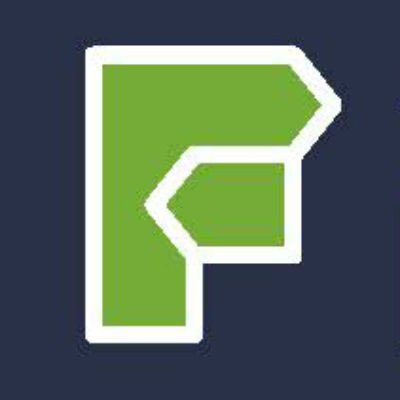Several years ago, one of our donor-advised fund (DAF) donors began volunteering at the Boston-based nonprofit City Year, complementing an annual grant recommendation of $2,500. In addition to the support already provided by City Year staff in high-poverty schools around the country, volunteers offer supplemental tutoring, mentoring and other services for students, all with the aim of closing the achievement gap.
This year, in addition to continuing her volunteer commitments, our donor increased her grant recommendation to a five-figure sum. One element critical to that decision? The opportunity to hear suggestions and comments from teachers and staff in the schools where City Year tutors and mentors, as well as from the students benefiting from the programs. Their direct feedback, she explained to the philanthropic strategist she works most closely with at Fidelity Charitable, gave her greater insight into the challenges they faced and how City Year was meeting the needs—convincing her of the value and impact of increased support.

As the use of DAFs—accounts with the sole purpose of supporting charities—continues to rise, this example illustrates how DAF donors are poised to advance an emerging practice in philanthropy: listening to the organizations and people they are trying to help. To listen well, they will need the help of nonprofits they fund.
The Mindset of DAF Donors
Far from being an isolated example, our research shows that the choice to establish and use a donor-advised fund may predispose its holder to value feedback. DAF giving is rooted solidly in the donors’ desire for greater impact—both in terms of maximizing financial resources for giving, but also for creating a more organized and thoughtful approach to philanthropy, including selecting which nonprofits and projects to fund. That’s why collecting—and importantly, applying—learnings gathered from listening to the individuals receiving services may be of particular value to DAF donors’ decision making.
The ease and flexibility of donor-advised funds have attracted a broad spectrum of donors—57 percent of Fidelity Charitable Giving Accounts, for example, have balances of less than $25,000, while several thousand have balances of more than $1 million. Our research shows that these diverse donors exhibit some common characteristics: a high rate of volunteerism; strong prioritization of giving; long-term thinking about how to support a program of philanthropy; and, frequently, a desire to engage family members in giving decisions. These traits link strongly to donors’ focus on effectiveness, both in choosing where to give, and how to collaborate with the organizations and movements they select.
How DAF Donors are Listening
Many DAF donors provide general operating support, but they are also hungry to help organizations pilot specific improvements—and they want to validate what works. Here, the lack of a fixed grantmaking cycle for most DAF donors can abet both their responsiveness to, and collaboration with, nonprofits, allowing donors to adapt their philanthropic strategies as they absorb new information. Among tactics we see:
Test-and-learn gifts: In addition to using smaller gifts as a way to test the waters with new organizations, we’ve also seen a rise in more formal “test” grants. In these cases, a donor recommends a smaller grant to support a project, and indicates the intent to recommend provide additional funding once certain outcomes are achieved.
Volunteering: DAF donors are volunteering with grantee organizations through service days, mentoring, and more. Through those experiences they hear of needs first-hand from the population they seek to serve, and gain perspective on how to address them.
Surveys and focus groups: Formal feedback from nonprofit focus groups or surveys of their clients are helping DAF donors decide whether and where to give. Where such feedback mechanisms aren’t part of a grantees’ measurement and evaluation system, some of our most significant donors have been willing to include the costs to develop them in their grant recommendations.
Expert consultation: We see a rising number of DAF donors turning to field experts, who can help them vet and identify opportunities. These experts or intermediaries with given populations can offer technical assistance for a donor to improve his or her ability to listen to that population. For example, one DAF donor, interested in global maternal and child health, made a grant to fund a midwives’ training program in Pakistan that filled a critical gap—providing hands-on opportunities for trainees to accrue the patient experience required to become certified to practice. The donor learned of this gap from a local expert, who gathered feedback from women who had completed midwifery courses, but were not practicing. Many of these women now are saving lives as practicing midwives in remote areas of Pakistan, where medical services are sparse.
The Portfolio Effect
DAF donors tend to build portfolios of giving. For example, a typical Giving Account at Fidelity Charitable supports an average of eight charities. Whether the donor recommends grants totaling $10,000 or $10 million a year, they often make decisions based on a larger vision or goal—be it addressing needs in their local community or making a dent in broader social problems.
But for DAF donors to connect the dots in their giving portfolios wisely, they need feedback from the populations they seek to help. It’s an opportunity for any nonprofit seeking financial support to listen to constituent voices for insight on areas of need, challenges, and opportunities. Listening to the people one seeks to help—and communicating their feedback—not only informs a nonprofit’s mission, but can also steward the donors who support it.
This article is part of a series that was produced for Stanford Social Innovation Review by Milway Media with the support of the William and Flora Hewlett Foundation.
Support SSIR’s coverage of cross-sector solutions to global challenges.
Help us further the reach of innovative ideas. Donate today.
Read more stories by Pamela Norley & Elaine Martyn.

